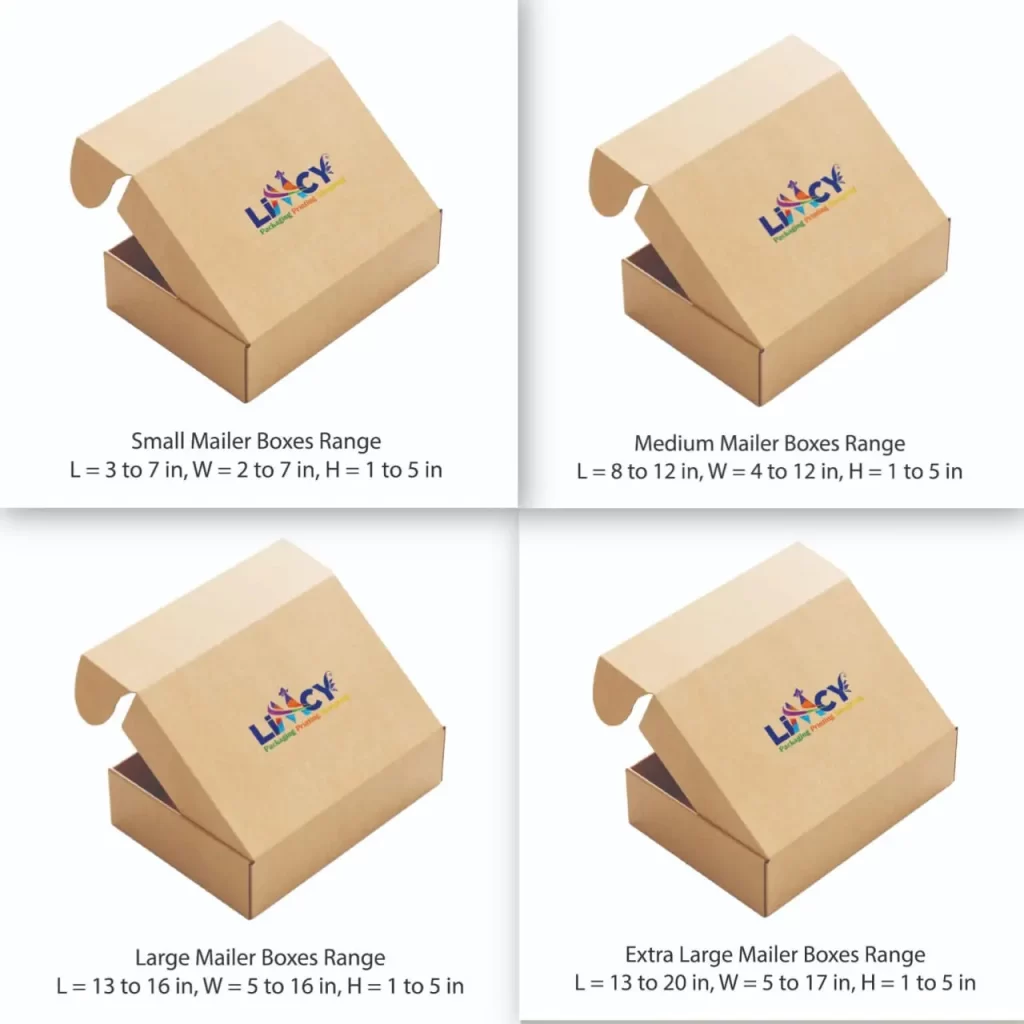Introduction to Mailing Box Size Chart
Ever tried squeezing a big item into a small box or shipping a tiny product in an oversized one? It’s either a disaster or a waste of money. That’s where knowing the right mailer box sizes comes in handy. Whether you’re running an e-commerce store, handling bulk shipments, or sending gifts, choosing the right box size saves costs, protects your products, and makes every delivery smoother.
Understanding Mailer Boxes
A mailer box is a sturdy, self-locking corrugated cardboard box used for packaging and delivery. Unlike standard shipping cartons, mailer boxes are designed for branding and presentation. Available in different mailer box sizes—from tiny to extra-large, businesses can easily choose the perfect fit for their products.
Why Box Size Matters in Packaging
- Cost Efficiency: Carriers charge based on weight and dimensions. Bigger boxes = higher costs.
- Protection: A snug fit prevents damage during shipping.
- Customer Experience: Nobody likes receiving a huge empty box with one small item rolling around inside.
Overview of Mailing Box Size Chart
Mailer boxes are typically grouped into four main categories:
- Small Size Mailer Boxes—compact and ideal for lightweight items.
- Medium-Size Mailer Boxes—versatile for everyday packaging.
- Large-Size Mailer Boxes—designed for bigger items or multiple products.
- Extra Large Size Mailer Boxes—made for bulkier shipments and wholesale orders.
Small-Size Mailer Box Chart
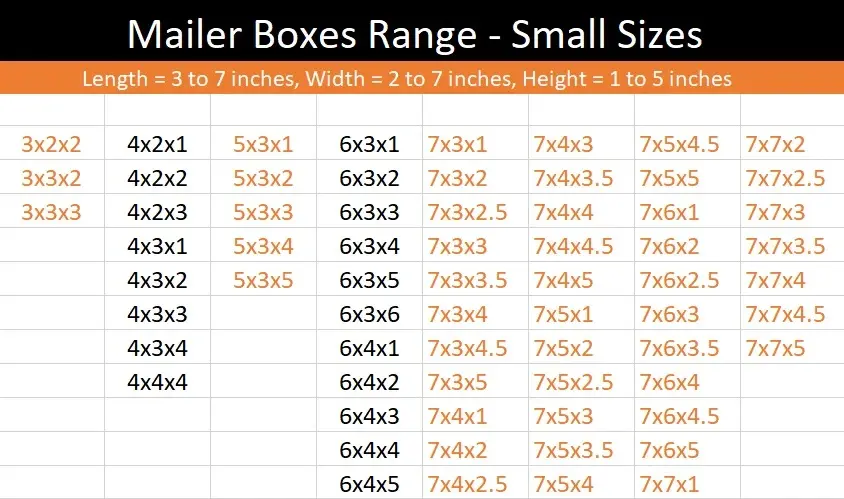
- Dimensions: From 3x2x2 inches up to 7x7x5 inches
- Best Uses: Jewelry, cosmetics, phone accessories, small electronics, and samples
- Why Choose Small Boxes? They’re lightweight, cost-effective, and reduce excess packaging.
Example sizes include:
- 3x2x2 (tiny items)
- 5x3x3 (beauty products)
- 7x5x4 (subscription box minis)
Medium-Size Mailer Box Chart
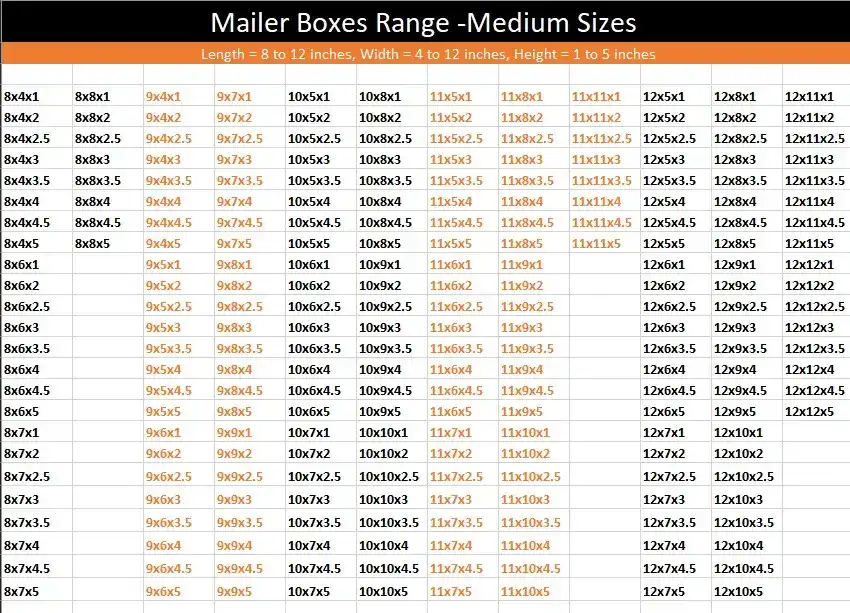
- Dimensions: Typically range between 8x6x2 inches up to 12x9x4 inches
- Best Uses: Apparel, books, skincare kits, small gadgets
- Advantages: These are the most versatile box sizes—large enough to fit multiple products but compact enough for affordable shipping.
Large-Size Mailer Box Chart
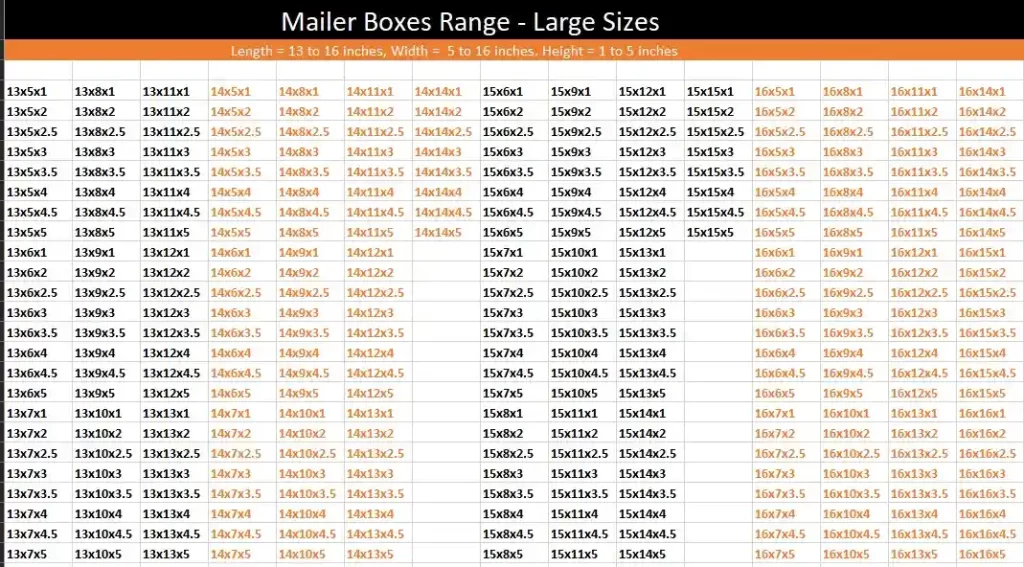
- Dimensions: 13x10x4 inches up to 16x12x6 inches
- Best Uses: Shoes, electronics, multiple-item orders, subscription boxes
- Why They’re Popular: E-commerce businesses love large mailer boxes because they balance protection with branding space.
Extra Large Size Mailer Box Chart
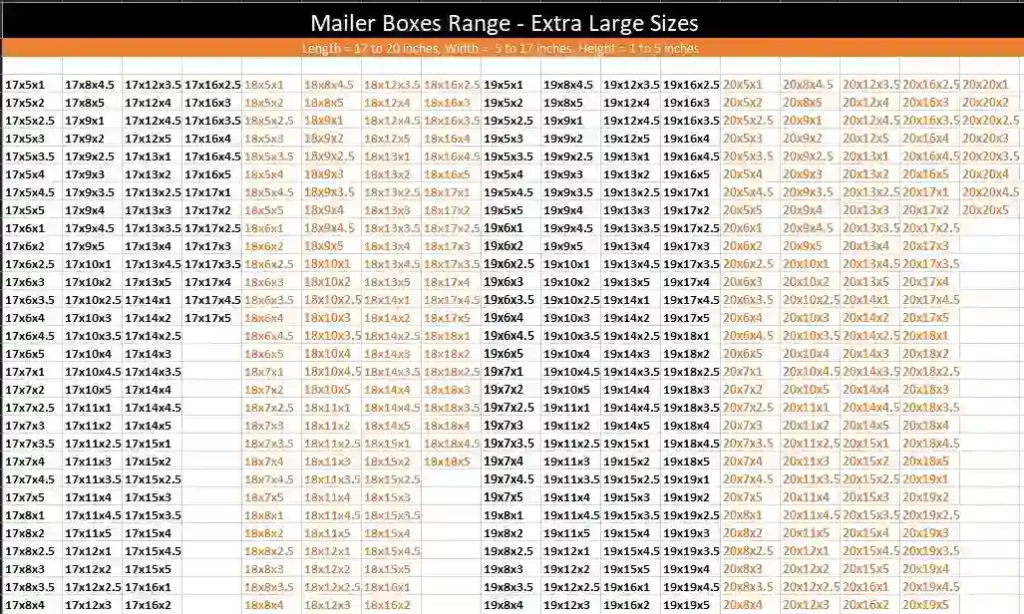
- Dimensions: 17x12x4 inches up to 20x14x8 inches (or more)
- Best Uses: Wholesale orders, bulky items, office supplies, gaming gear
- Pro Tip: Always match extra-large boxes with sturdy corrugated material for maximum protection.
How to Read a Mailing Box Size Chart
When checking charts, dimensions are always listed as
- Length x Width x Height (LxWxH)
- Internal dimensions = actual usable space
- External dimensions = include cardboard thickness
Choosing the Right Box for Your Product
- Measure your product carefully
- Pick a size slightly larger to allow for protective wrapping
- Avoid oversized boxes to reduce costs and waste
Cost Implications of Mailing Box Sizes
Courier companies like UPS, FedEx, and DHL calculate charges using dimensional weight (DIM weight). That means even if your box is light, a bigger box may still cost more.
Custom vs Standard Mailing Box Sizes
- Standard Boxes: Affordable, widely available, and courier-friendly.
- Custom Boxes: Great for branding and product-specific needs, but more expensive.
Mailer Box Materials and Strength
- Single-wall corrugated: Lightweight and cost-effective.
- Double-wall corrugated: Stronger, ideal for heavy shipments.
Industry Standards in Mailing Box Sizes
Popular shipping services often stick to standardized dimensions for cost efficiency. Aligning with these helps businesses cut costs and avoid courier penalties.
Tips for Efficient Packaging
- Use filler materials only when necessary
- Practice right-size packaging to reduce waste
- Take advantage of mailer boxes for branding—logos, prints, and colors make a huge impact
Conclusion
A mailing box size chart is more than just numbers—it’s a guide to smarter shipping, better customer experiences, and reduced costs. Whether you need small, medium, large, or extra-large mailer box sizes, choosing the right fit keeps your products safe, your shipping bills low, and your brand image strong.
Ready to order custom mailer boxes? Start your order
FAQs
Q1. What is the most common mailer box size?
Ans. The most common sizes are 9x6x2 and 12x9x4, as they fit a variety of products.
Q2. Can I use oversized boxes for small items?
Ans. Yes, but it’s not recommended since it increases shipping costs and requires extra filler.
Q3. How do I measure my product for the right box?
Ans. Measure the length, width, and height of your item, then add 0.5–1 inch for cushioning.
Q4. Do mailing box sizes affect courier charges?
Ans. Absolutely. Larger boxes are priced higher due to dimensional weight calculations.
Q5. Where can I get custom mailer boxes?
Ans. You can order from packaging suppliers, printing companies, or online vendors offering branded boxes.

